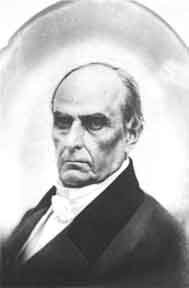Compromise of 1850

The Compromise of 1850 included admitting California to the Union, passing the Fugitve Slave Act, banned slave trade in Washington DC set the Texas borders and allowd New Mexico and Utah territories to organize.
The Compromise of 1850 succesffuly delayed the Civil War by ten years The main issue at hand was the incorporation of new states into the Union, a matter that necessitated a delicate balance between free states and slave states.
The issue that set off the need for a compromise was the fact that California, sought admission into the Union as a free state. The debate was initiated by the frail Senator Henry Clay, who advocated for a compromise between the Northern and Southern states. Senator John Calhoun, despite suffering from tuberculosis, delivered his final speech in the Senate. He reiterated his support for the South's interests while concurrently advocating for compromise.
Daniel Webster, a prominent representative of the Northern interests, delivered a persuasive plea for compromise to safeguard the Union. Webster's call for compromise was instrumental in swaying many Northerners to accept concessions, primarily the Fugitive Slave Act, facilitating the compromise's passage through the Senate.
President Taylor initially opposed the compromise. However, following his untimely demise, his successor supported these legislative measures, leading to the eventual passage of the Compromise of 1850.
The components of the Compromise of 1850 included:
-
California Admission: California was admitted as a free state. This upset the balance of free and slave states in the U.S. Senate, which had previously been equal.
-
Fugitive Slave Act: This controversial act required citizens to assist in the recovery of fugitive slaves and denied slaves the right to a jury trial. It also increased penalties for officials who did not arrest alleged runaway slaves and for those who aided in their escape.
-
Slave Trade in Washington, D.C.: The Compromise abolished the slave trade in Washington, D.C., the nation's capital, but did not end slavery there outright.
-
Texas Boundary Act: The Compromise set Texas's boundaries at their present form. Texas ceded land which included parts of present-day New Mexico, Oklahoma, Kansas, Colorado, and Wyoming to the federal government. In return, the U.S. government assumed Texas's public debt.
-
New Mexico and Utah Territories: The New Mexico Territory (which included present-day Arizona and part of Nevada) and the Utah Territory were organized under the rule of popular sovereignty. This meant that the settlers in these territories could decide through their territorial governments whether or not to allow slavery.
 >
>